Overview
Landchecker is software for property professionals based in Melbourne, Australia. It’s a single-source of property data, with intuitive data analysis tools. Landchecker can provide data on consolidated planning permit, including filters to quickly find the most relevant information such as planning maps and land size. It can help users narrow down an entire suburb to a handful of suitable sites in seconds using advanced filters displaying sales history and residential comparable sales data.
Research Process
This is my process and an example on how I got a ton of practice and quickly solidified, matured, and grew even more as a designer.
How often do we research? is it always on or do we research by project?
At Landchecker we research per project and across the plattform quarterly. We circle though our design, build and go to market process to inform our road map, aligning our team with our business goals.
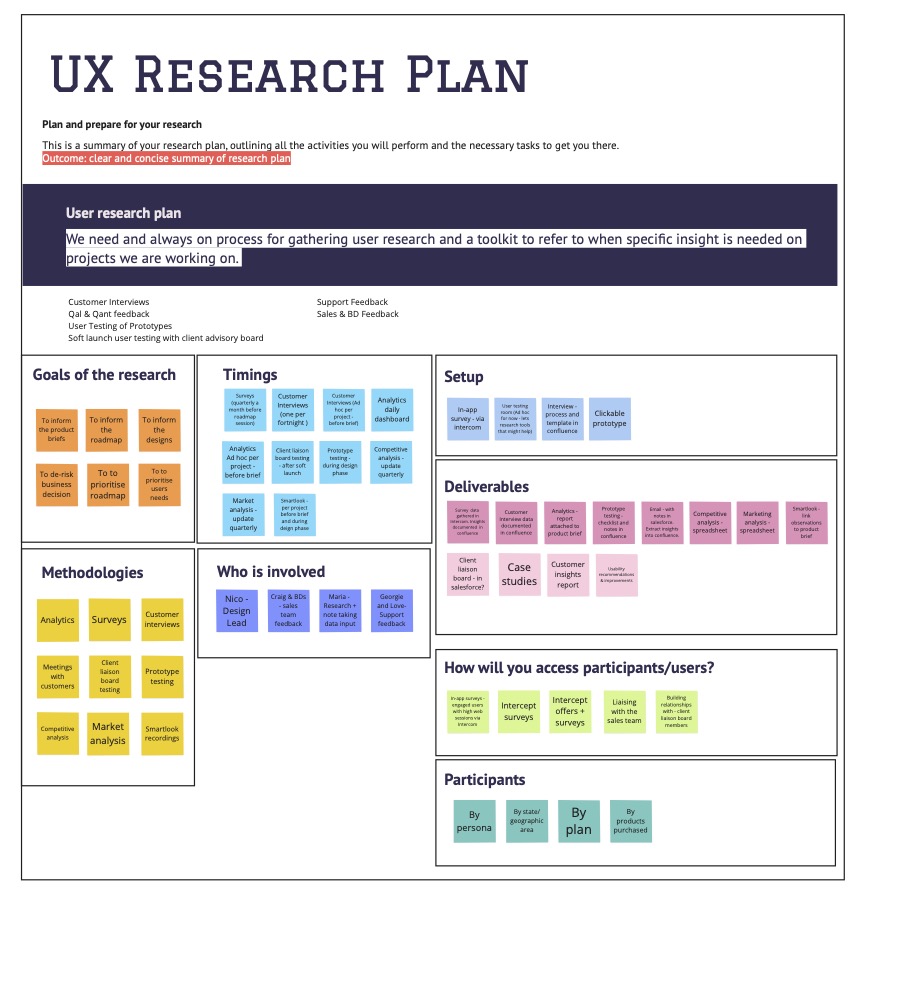

How do we find customers to interview?
We link up with the customer success team, they visit customers all over Australia in a monthly basis and weekly in Victoria. We have a log in Confluence under our Processes space. The sales and customer success team log in features request ad important feedback from our top clients and power users. I analyse the feedback logs and drag out all important insights for the discovery phase.
Email templates for reaching out to customers
During the discovery phase: market research, competitive research and analysis, definitions of relevant information, smartlook insights, or as I like to call it insight foraging; where I watch how our users interact with our application, specifically power users. I find them by heading to intercom and filtering the most active members, refert to the image below:
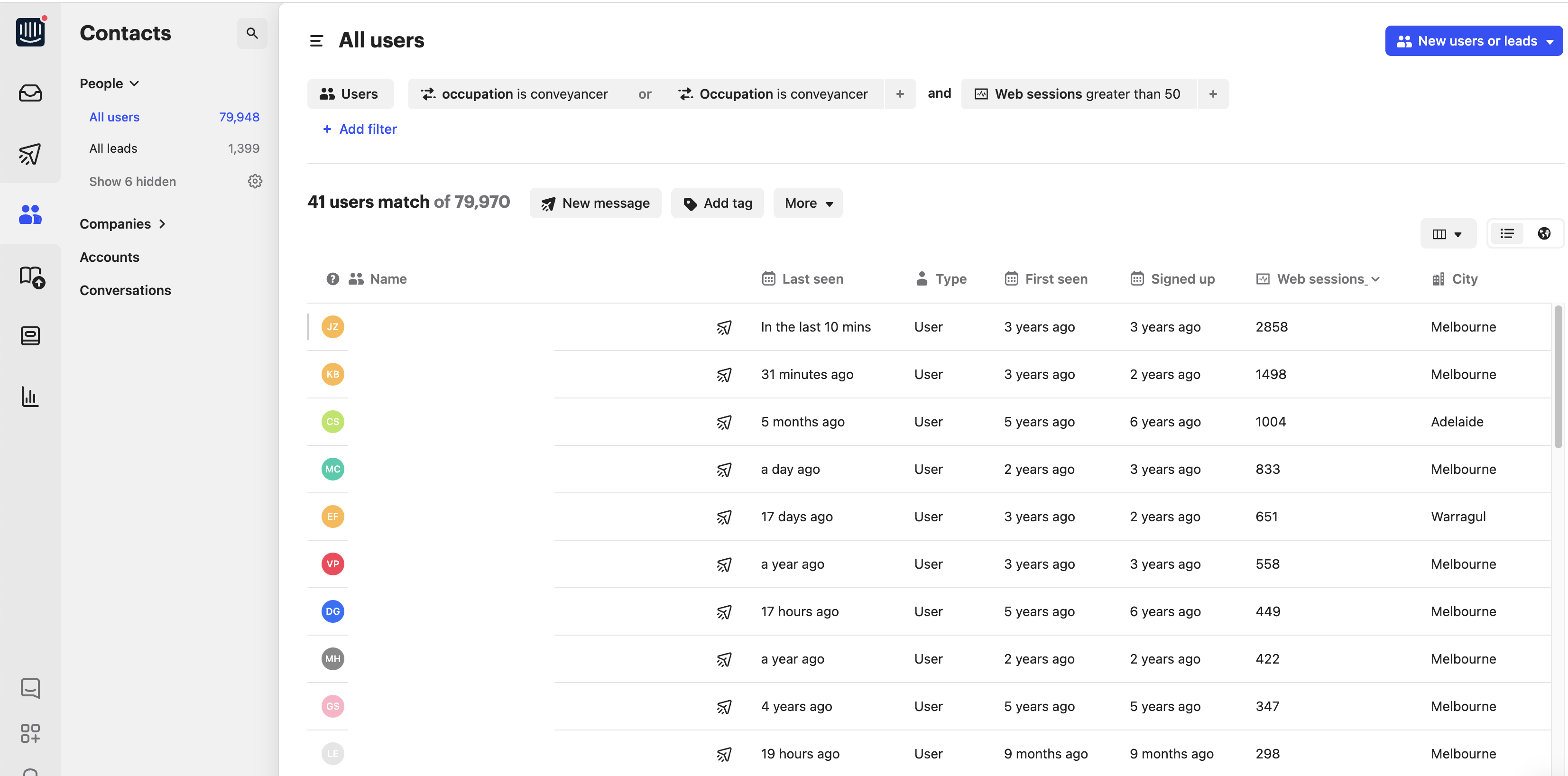
After I have gather this information I email them to request an interview. We have general customer interview template that we can tweak depending on project, this template lives in confluence.
How do we document data?
We (the product designer lead and the back-end developers) gather data from surveys, support emails and intercom, then I use miro for synthesising all this information. We also log every feature requests in confluence and analysis of survey feedback.
Affinity mapping

What are the challenges we experience?
We tackle an overall analysis of user feedback from 2016-2022 in 3 months. This can be a challenging task because we have almost 80,000 members.
I usually experience time constraints challenges. There are various factors that limit projects in terms of time, this includes deadlines, workload management, and resource allocation. It is a common scenario for anyone that has worked on a small team, our projects have to deal with certain constraints when it came to execution, but we are innovative and consider different ways of coping with situations by generating different approaches to dealing with challenges and setbacks as well as to resiliently recover from them.
My main responsibilities are: UX Researcher,user interviews, synthesising, UX midsets (personas),user stories, task analysis flows, flow charts, UI prototypes, presentations and many more.

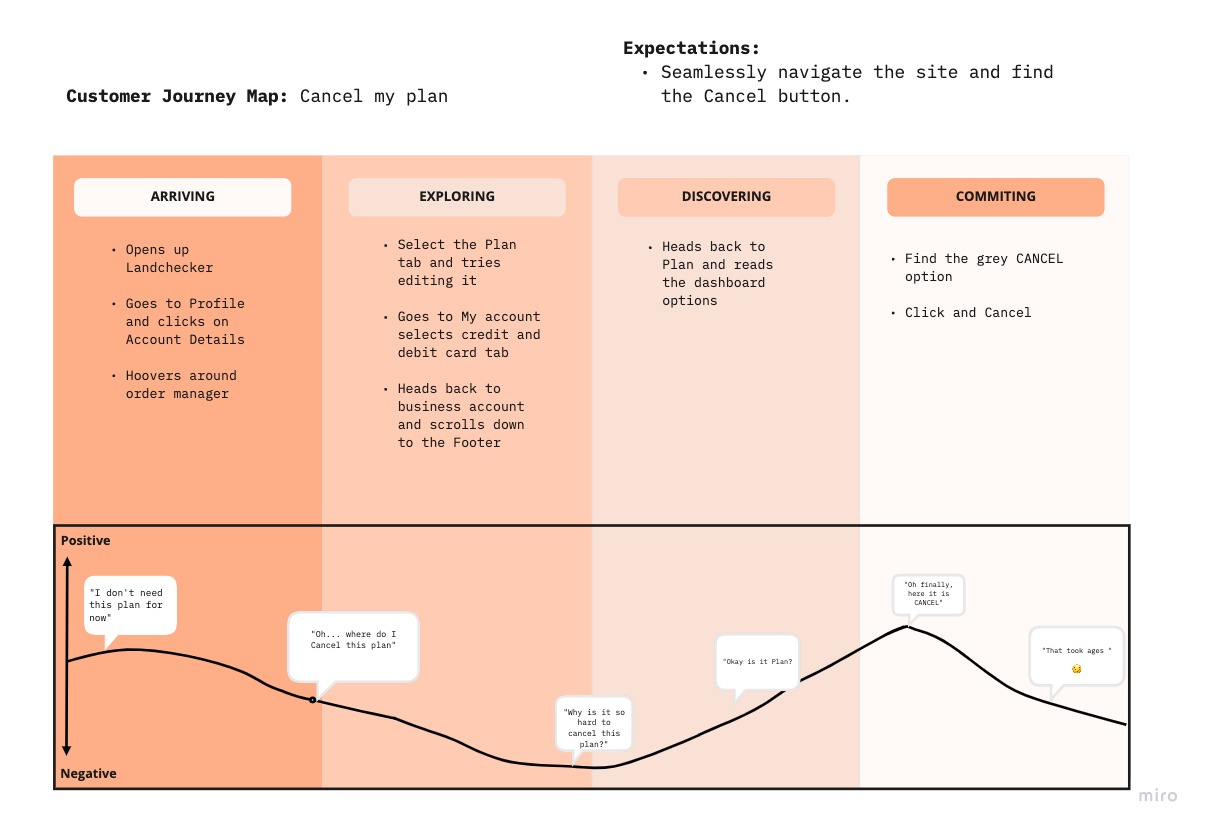
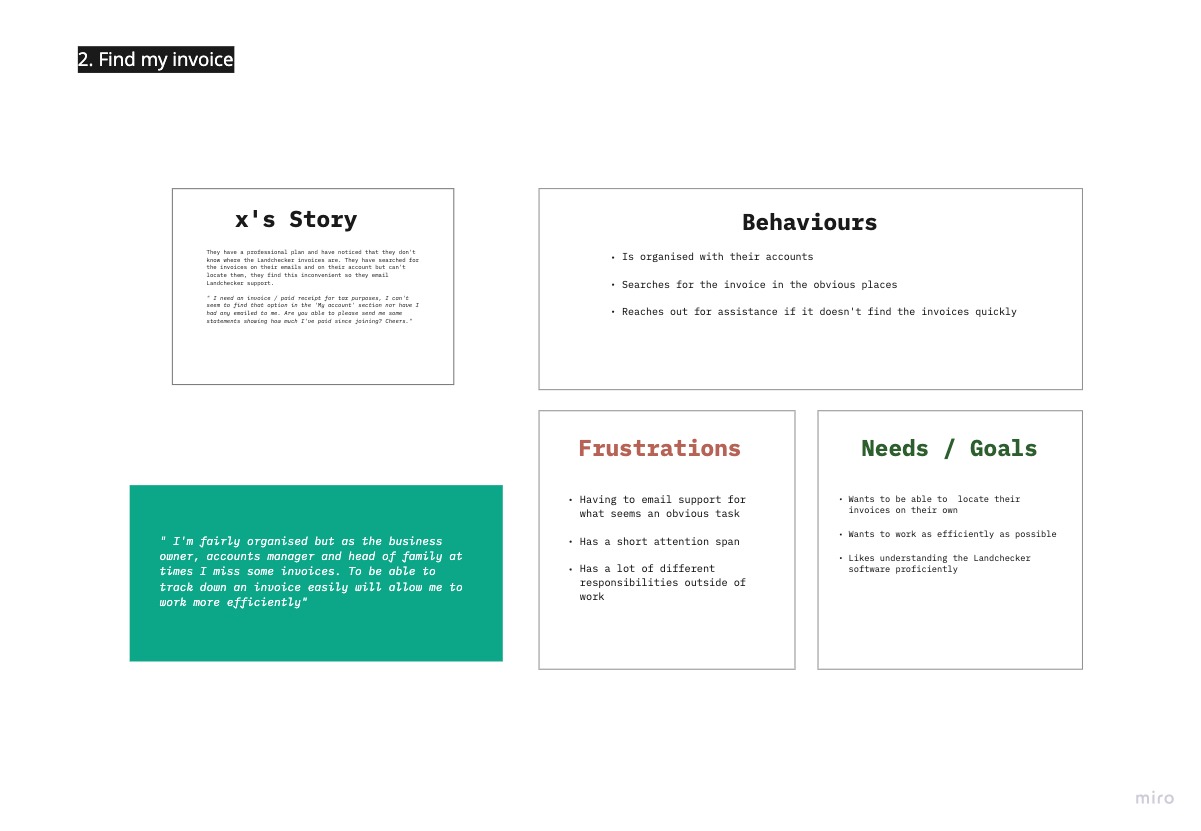
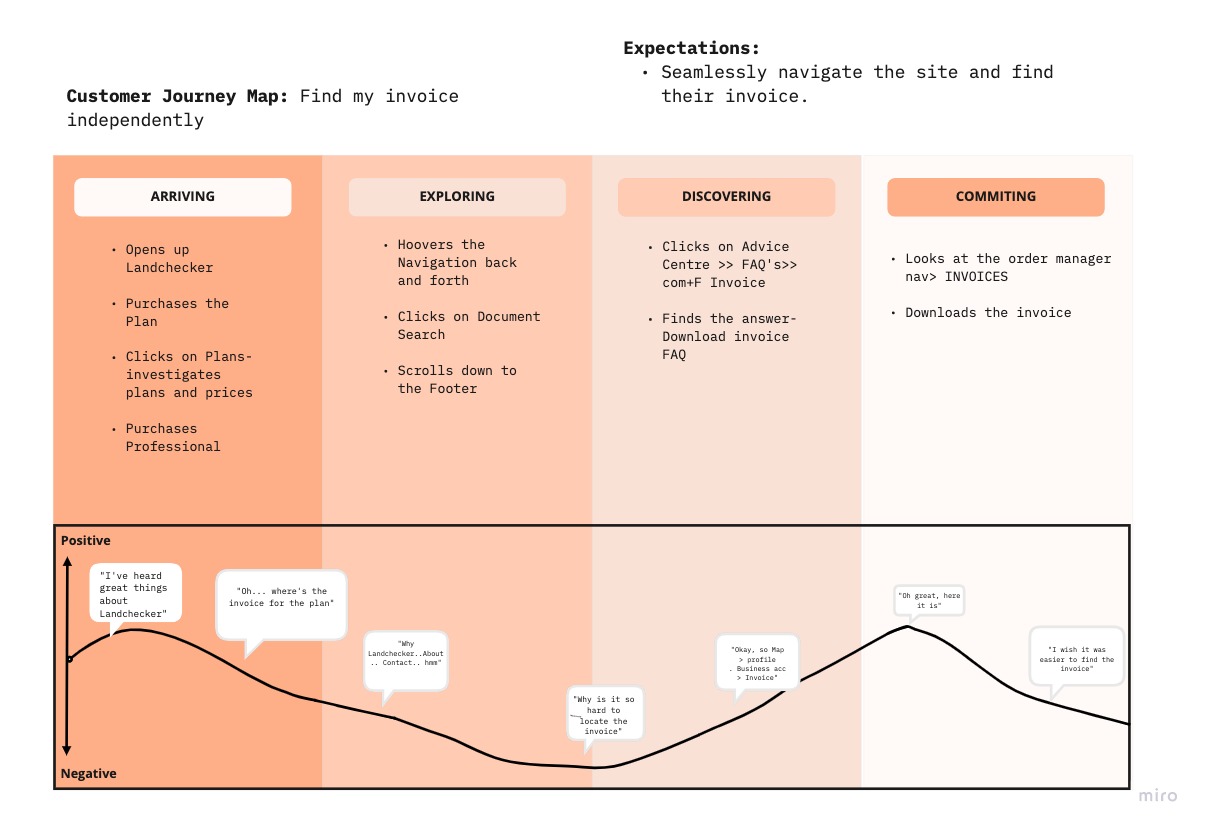
After very thorough research and catchups with the product manager and developers we have a kick off meeting. In this meeting we review the problem statment and we discuss ideas and possibilities.
For the user feedback reseacrh project from 2016-2022, I concluded that the majority of enquieries were surrounding the same subjects: Plan managements, confussion in prices, technical dificulties and document searches, this pain points generated most of our enquieries both on support and intercom.
I concluded that our users needed to become more independent, find educational resources and intuitibly find the solutions and answers to all enquieries within our site. Theoretically This will result in reducing enquieries and with more information users would feel ascetive about our product, driving them into purchasing more products, plans, inviting other members of their organisations and sharing projects, which will essentially bring more users into our application, therefore aligning product and development with business goals.
At Kick offs I present the problem statement to our team, in this case:
Our users need more educational resources available on our site, so that they can be self sufficient and independent.
How might we educate our users so that they can work more efficently?
What are our goals?
Generally speaking our goals are: To inform the product briefs, to inform the roadmap, to inform the designs, to de-risk business decisions and to prioritise users needs.
What actions do we take next?
The product manager updates the road map adding all new projects into categories and prioritising them in level of importance, I get updated on my tasks and tickets under the Projects> Kanban board > Design Software Projects.
I start the cycle with Ideation, planning & design for each project, having almost daily meetings with my team.
How do I create change?
I like to think that I lift the fog and reignite confidence in users at Landchecker, I can confidently communicate solutions to my peers, stakeholders and users. I believe in understanding users, diving deep into the relationships we have with the world and creating successful user-centric experiences that reflect our mental model.Therefore I never stop educating myself and hoping I can deliver better and more deeply strategic solutions.
For the above example on creating educational resources I worked on the following solutions:
- Design Product Help Page
- Design & create content for FAQ’S
- Static Content pages: Our Products & Our Customers